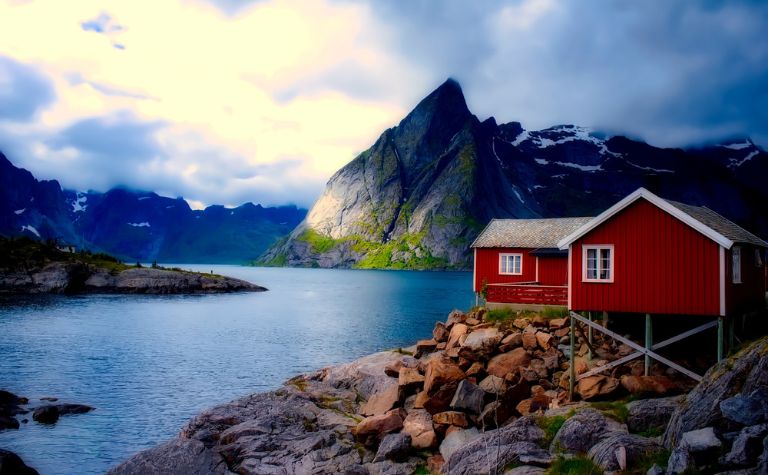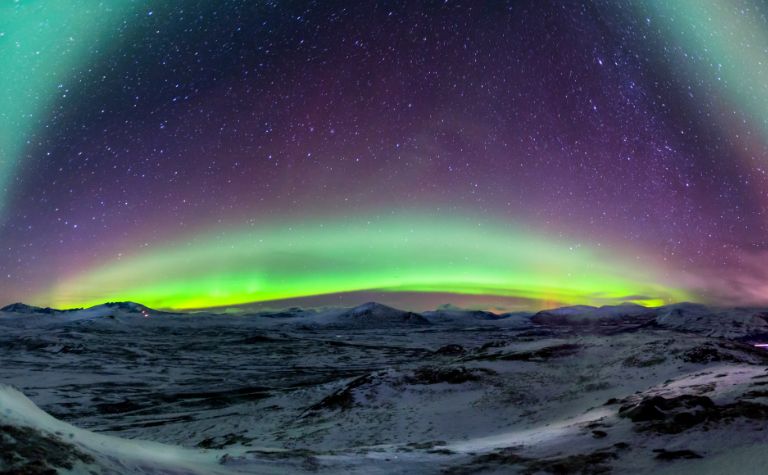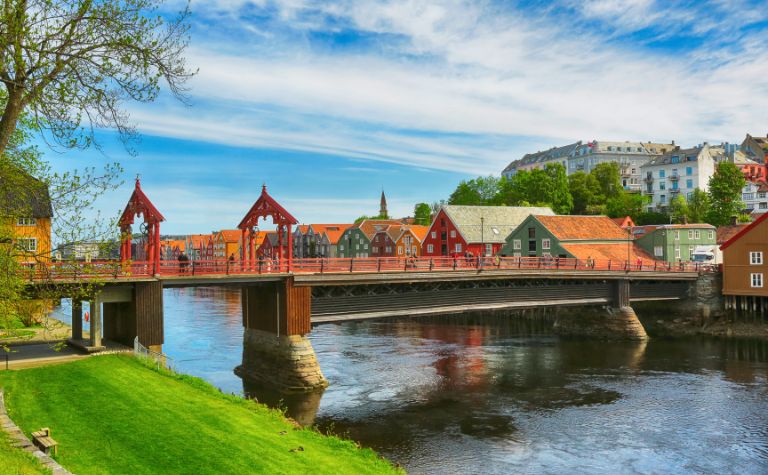Norway is a popular travel destination well known for its unspoiled scenery and natural wonders. The country also has a distinct culture that evolved independently of the other countries in Scandinavia and is known for its Viking heritage.
There are many things to do in Norway, like visiting the stunning fjords, mountains, and glaciers.
Visitors to Norway can experience the country’s heritage at the Viking Museums in Oslo and the midnight sun phenomenon near the Arctic Circle.
Norway is known as the “Land of the Midnight Sun” because the country experiences the natural phenomenon of the sun that doesn’t set in the summer.
The sun doesn’t set above the Arctic Circle for several weeks, and numerous activities are organized around this phenomenon.
Also, see How Much Does It Cost To Live In Norway? to learn more.

What Cultural Experiences Can Tourists Have in Norway?
Norway has a rich and unique history, and the country’s culture developed in relative isolation from the rest of Europe.
Apart from the Viking heritage, the indigenous people of Scandinavia, the Sami people, also contribute to the country’s cultural development.
Tourists in Norway can have cultural experiences like visiting museums about the Vikings and the country’s maritime developments.
Tourists can also visit palaces like the Royal Palace in Oslo and the many World Heritage Sites in Norway like the Urnes Stave Church and the buildings of Bryggen.
The Urnes Stave Church brings Celtic Art and Viking traditions together and is an important World Heritage Site for visiting tourists and the people of Norway. [1]
Museums of interest in Norway include the following:
- The Viking Ship Museum
- The Norwegian Museum of Cultural History
- The Norwegian Maritime Museum
- The Kon-Tiki Museum
There are a number of Viking-themed experiences curated for tourists, including heritage walks in Bergen and the Viking Village in a valley near Gudvangen.
The islands of Svanøy and Sognefjord were also important spaces in Viking history. Tourists will find tour guides to take them through the islands to see the important historical locations.
Oslo is a popular destination for experiencing culture in Norway due to the sheer number of historical, art, and design-based museums in the entire city.
Oslo is also a good city to find artists and musicians who work with the traditional folk music of Norway, as well as Sami music.
Sami culture can be experienced more fully in Karasjok and Kautokeino, where tourists can visit the Sami Parliament. [2]
Visitors can also watch how traditional crafts like silversmithing and knife-making are practiced in these areas.
Also, see What Is Norway Known For? to learn more.

What Natural Places in Norway Are Worth Visiting?
Norway’s landscapes are among the greatest attractions that draw tourists and other visitors to the country.
Hikers and skiers love exploring the beautiful natural wonders of Norway, and people also visit to experience the weeks of the midnight sun.
Fjords are at the top of the list of natural places worth visiting in Norway. There are over 1190 fjords in Norway. The longest is Sognefjord, and Geirangerfjord is the most stunning.
The Arctic Circle has whale watching and other activities, and the country has many beautiful nature reserves.
The entire coastline of Norway is indented with fjords. These are narrow inlets typically formed by glaciers, which have steep sides.
The word fjord itself is a Norwegian word of Viking origin, as the seafaring Vikings relied on the fjords for their military strategy.
Among the many fjords in Norway, ten are commonly visited, including the longest and deepest, Sognefjord, which is also known as the “King of Fjords.”
The Geirangerfjord is among the most beautiful fjords and is also on the list of UNESCO’s World Heritage Sites for its beauty.
The area around the fjords contributes to the attractiveness of these natural wonders.
The thick forests, snow-capped mountain peaks, and beautiful waterfalls surrounding the fjords are all important and worth visiting.
Several cruises travel to the Arctic Circle above Norway, especially in the summer when the sun doesn’t set for several weeks.
During this time, many activities are organized, and tourists can spot whales, polar bears, and walruses.
In the winter months, the weather is more forbidding, but visitors to the Arctic Circle have the opportunity of catching the famous Northern Lights. [3]
The region also has a number of nature reserves that are perfect for hiking, skiing, and dog-sledding.
Another important natural space worth visiting in Norway is the Botaniske Hage, an Arctic-Alpine botanical garden.
The garden houses several plant species from around the world but is best known for the Siberian Lilies, Arctic poppies, and other hardy plants suited to the region.
Also, see How Do You Move to Norway? to learn more.

What Historic Places Are Good to Visit in Norway?
Norway is full of natural wonders, but it is equally rich in cultural and historical heritage.
From the Sami to the Vikings, Norway possesses a number of cultural assets and has eight historical sites on the UNESCO World Heritage List. [4]
Historic places good to visit in Norway include the Urnes Stave Church, the Rock Art of Alta, the Vestfold Ship Burials, and the Royal Palace in Oslo.
Other areas of importance include the harbor district Bryggen, the Røros mining town, and the Rjukan-Notodden site.
The Urnes Stave church is among the oldest wooden churches built in the mix of Viking, Celtic, and Romanesque styles and was built in the early 12th or 13th centuries.
In northern Norway, in Finnmark, lies the prehistoric Rock Art of Alta. This site is Norway’s only prehistoric heritage site and comprises five groups of carvings.
The carvings are believed to have been made by the hunter-gatherers who inhabited Norway at the time.
Vestfold is a Viking burial site with over 60 graves, including the Gokstad Mound, where the Gokstad Ship containing the skeleton of a man was found.
The ship is displayed at the Viking Museum in Oslo.
Bryggen is located in Bergen and is known for its distinctive, traditional wooden houses.
The Røros is also made of wood and had to be rebuilt after it was razed in 1679.
The Rjukan-Notodden site is more modern, built to preserve and exhibit the industrial landscape of the early 20th century.
Conclusion
There are many natural, cultural, and historical sites to visit in Norway. Visitors can also participate in activities like winter sports and visiting museums.
Also, see Is Norway Socialist? to learn more.
